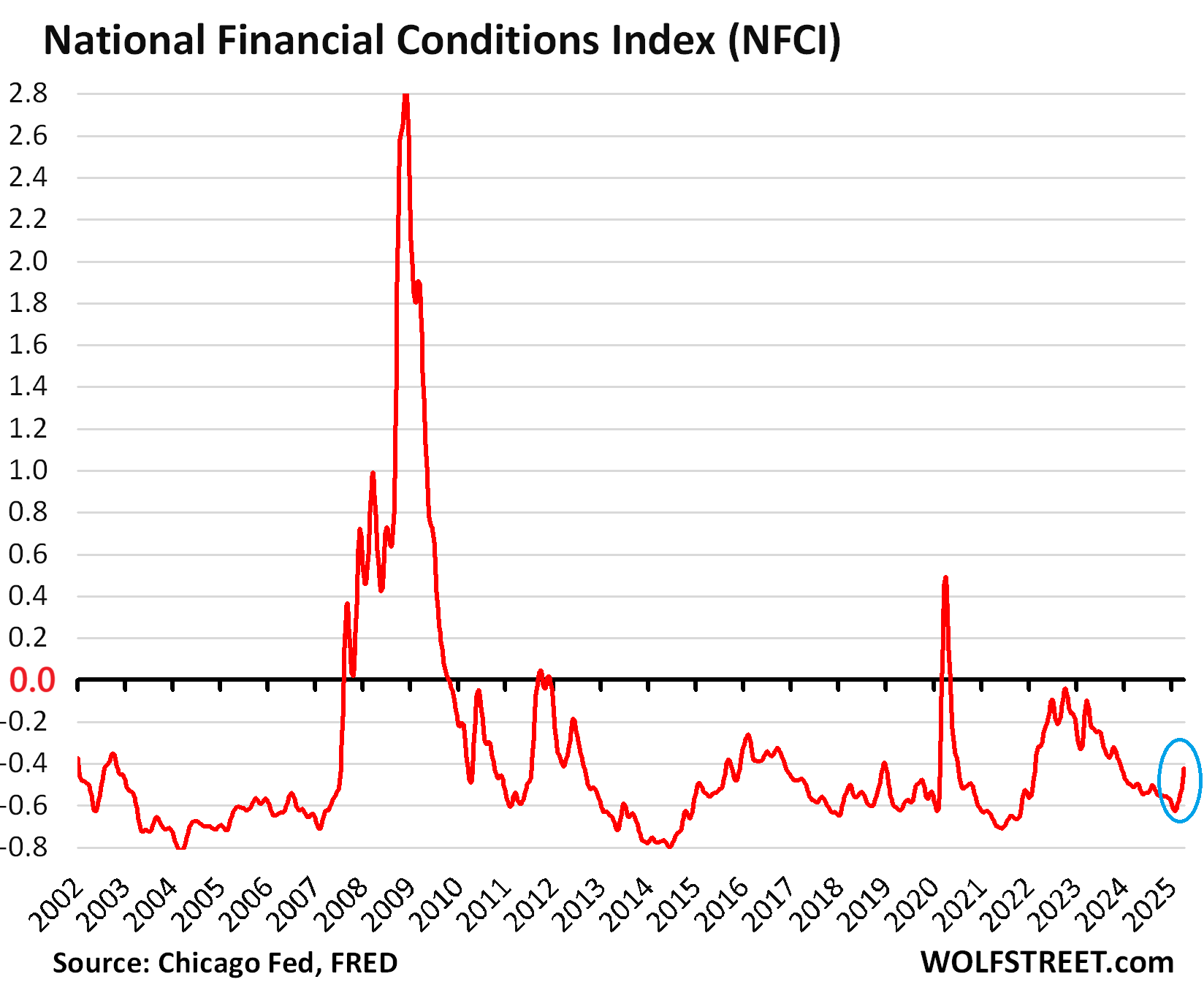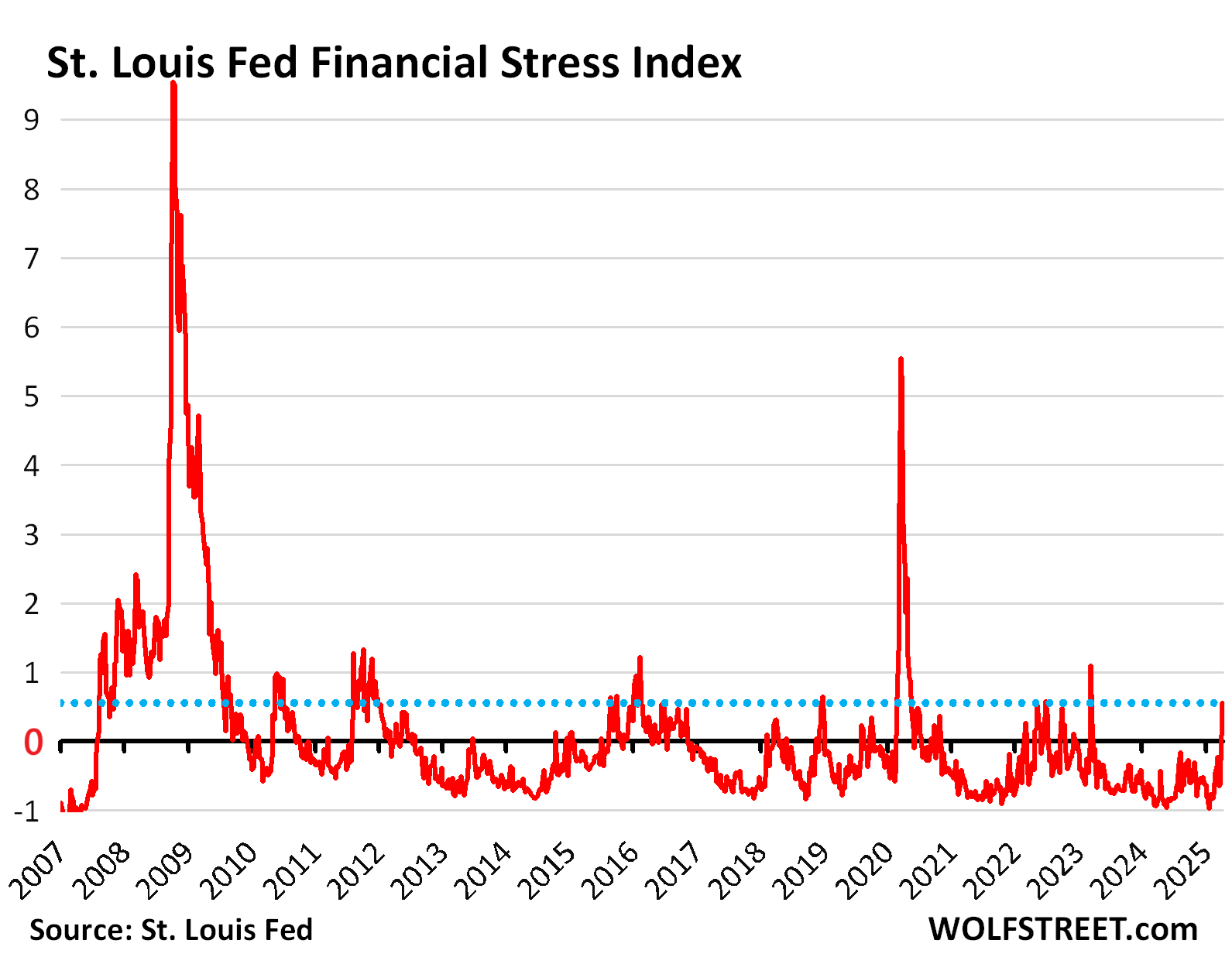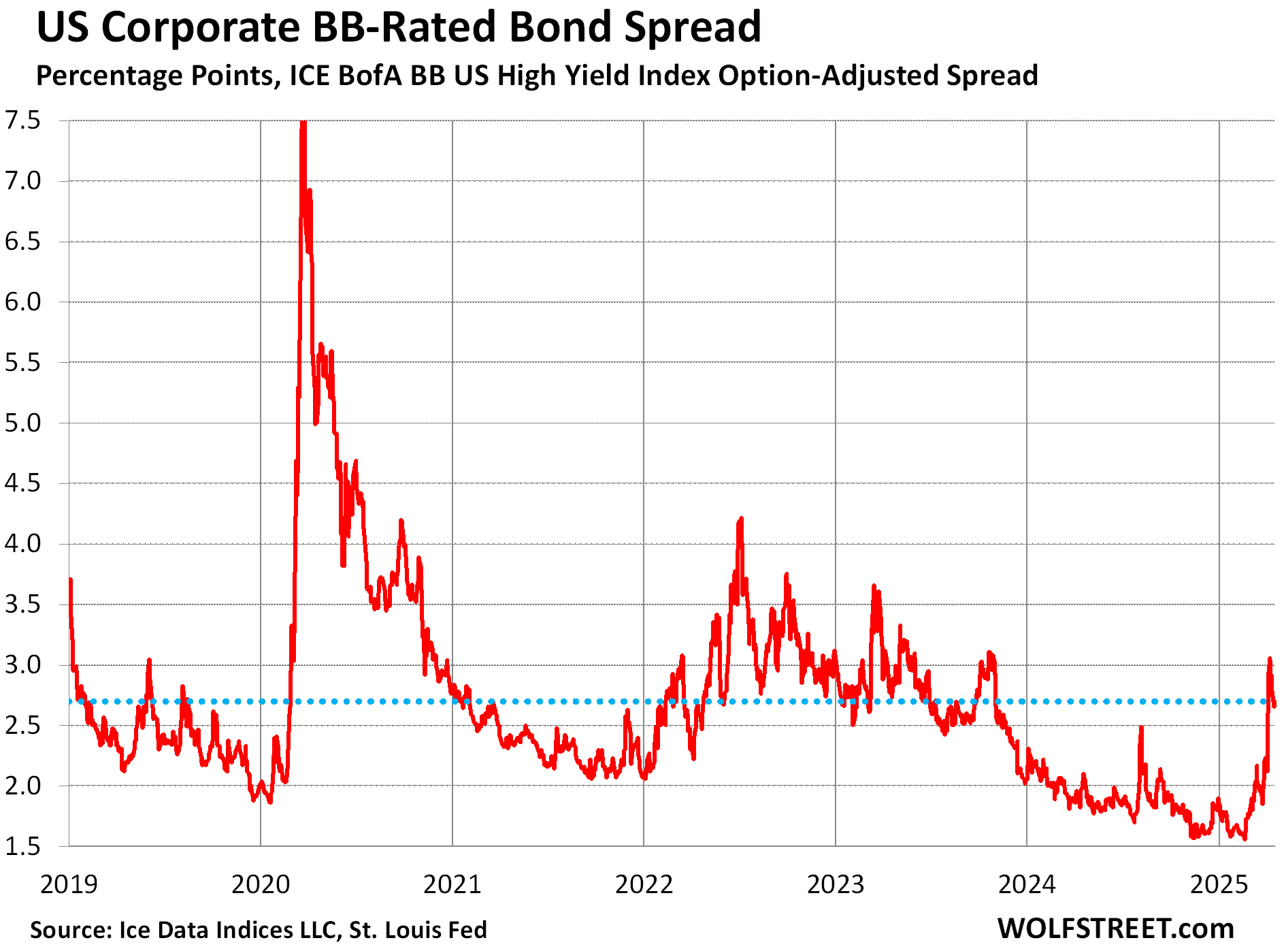[[{“value”:”
These are aspects the Fed is considering in setting its monetary policy; that type of discussion is part of its meeting minutes.
By Wolf Richter for WOLF STREET.
Despite the turmoil in the stock market that has been zigzagging down from dizzying and mindboggling all-time highs as all kinds of stuff is getting repriced, broad financial conditions in the credit markets remain in la-la land, or are just barely exiting la-la-land.
The NFCI is still in la-la-land but looking for the exit. Overall financial conditions in money markets, debt markets, and equity markets, according to the Chicago Fed’s National Financial Conditions Index which tracks over 100 data points, have tightened from ultra-loose at the end of January, to still very loose in the most recent week, when the NFCI rose to -0.42.
The average value going back to 1971 is zero, and negative values indicate looser-than-average financial conditions. The NFCI of -0.42 shows that financial conditions are still far looser than average, and looser than in the period from March 2022 through December 2023. But the looseness during the era of QE and interest-rate repression, and the looseness that ironically prevailed during much of the Fed’s tightening, is slowly fading.

The purpose of the Fed’s “tightening” – including $2.24 trillion in QT so far and higher policy rates – is tighter financial conditions that would put a damper on demand and thereby on inflation.
But the Fed’s tightening has been belittled and laughed off by many people as financial conditions loosened further, despite its tightening, after the depositor-bailouts of three regional banks that collapsed in the spring of 2023. And by November 2023, I mused: “Could it Be the Fed’s Mega-QE Created so Much Liquidity that Tightening Doesn’t Work until this Excess Gets Burned Up?”
St. Louis Fed Financial Stress Index gets a little nervous. The index measures financial stress based on 18 data series from the credit markets, including seven different interest rates, six yield spreads, the Market Volatility Index (VIX), bond market indices, the S&P 500 financials index, and the TIPS-based 10-year breakeven inflation rate.
Periods of financial stress have “historically been characterized by increased volatility of asset prices, reduced market liquidity conditions, or the narrowing or widening of key interest rate spreads,” the St. Louis Fed says in describing this index.
The zero line denotes average financial stress. Negative values denote less than average financial stress. The index goes back to 1994. Over the past two weeks, the index moved into the positive for the first time since March 2023.
In the most recent week, the index rose to +0.55, about where it had been in mid-2022 and below March 2023, and far below any periods of real financial stress – March 2020 (+5.55) and October 2008 after Lehman Brothers filed for bankruptcy (+9.5).

Junk bonds barely emerged from la-la-land and in recent days have tried to return to la-la-land. It’s just hard to keep the yield-chasers down.
BB-rated bonds make up the upper range of the high-yield spectrum. Companies that are rated BB have a higher theoretical risk of default than companies in the investment-grade spectrum (my cheat sheet for corporate credit ratings by ratings agency). They face greater cash-flow problems to service their debts when the economy spirals down, and they face greater difficulties refinancing maturing debts when financial conditions tighten.
The spread between BB-rated bonds and Treasury securities indicates how much more investors demand to be paid in interest to take on the additional credit risks that come with BB-rated bonds compared to Treasury securities.
The ICE BofA BB US High Yield Index Option-Adjusted Spread had widened to 3.06 percentage points by April 7, up from record lows in January, but has since then narrowed to 2.70 percentage points.

While the extra interest demanded is no longer at record lows as it was in January, it’s maybe not even back to what might be called the normal range, the range that prevailed over the majority of the time over the past 28 years.

Various aspects of financial stress and financial conditions are something to watch. When financial stress gets very high, and financial conditions get very tight, more high-risk corporate borrowers lose access to the credit markets, or can borrow only at a very high cost, which increases their risk of default. For individual companies, this happens all the time as one or the other individual company gets in trouble. But when it happens across the spectrum, it can spiral into a bigger problem and exacerbate an economic downturn and unemployment. This is one of the things the Fed is considering in setting its monetary policy, and that type of discussion is part of its meeting minutes. But so far, not much has been rather uneventful, despite the turmoil in the stock market.
Enjoy reading WOLF STREET and want to support it? You can donate. I appreciate it immensely. Click on the mug to find out how:
![]()
The post Despite Turmoil in Stocks: Financial Conditions, Financial Stress, Junk-Bond Spreads Still in La-La Land or Barely Exiting appeared first on Energy News Beat.
“}]]
Energy News Beat

